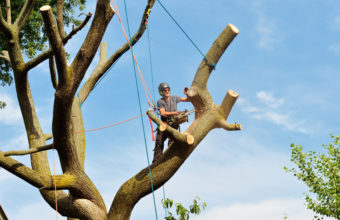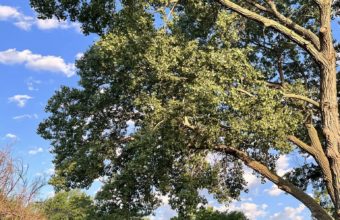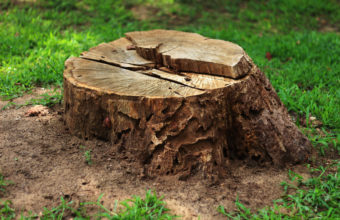Cutting off the top of a tree, a practice commonly referred to as “tree topping” or “topping,” is generally not recommended and can harm the tree. Topping a tree involves removing a significant portion of its upper branches and canopy, often leaving stubby, unsightly branch ends.
Here’s why this practice can have severe consequences and is not a recommended method for tree maintenance…
- Stress and Decline – Topping causes severe stress to the tree, leading to a decline in its overall health. The loss of foliage reduces the tree’s ability to photosynthesize, leading to decreased energy production and weakened vitality.
- Decay and Disease – Topping creates large open wounds at the cut sites, making the tree more vulnerable to decay, disease, and insect infestations. The exposed wood is an entry point for pathogens and pests that can further harm the tree.
- Weak Regrowth – After topping, the tree may produce a profusion of new shoots, called “water sprouts” or “epicormic growth,” from the cut ends. These new branches are often weakly attached and prone to breaking, posing a safety hazard.
- Altered Growth Patterns – Topping can lead to unnatural growth patterns, including multiple leaders (co-dominant stems), which can result in structural weaknesses and an increased risk of falling branches.
- Aesthetic and Environmental Impact – Topped trees often have an unsightly appearance, negatively affecting the landscape and property value. The loss of foliage also reduces the tree’s ability to provide shade, habitat, and other environmental benefits.
In many regions, tree topping is discouraged or even prohibited by local tree ordinances and regulations due to its detrimental effects on tree health and safety. Instead of topping, if you have concerns about the height or size of a tree, it’s recommended to consult with a certified arborist or tree care professional. They can recommend appropriate alternatives such as crown reduction, selective pruning, or canopy thinning that can address your concerns without causing long-term harm to the tree. Proper pruning techniques performed by knowledgeable professionals can help maintain the tree’s health and structural integrity while achieving your desired goals.






